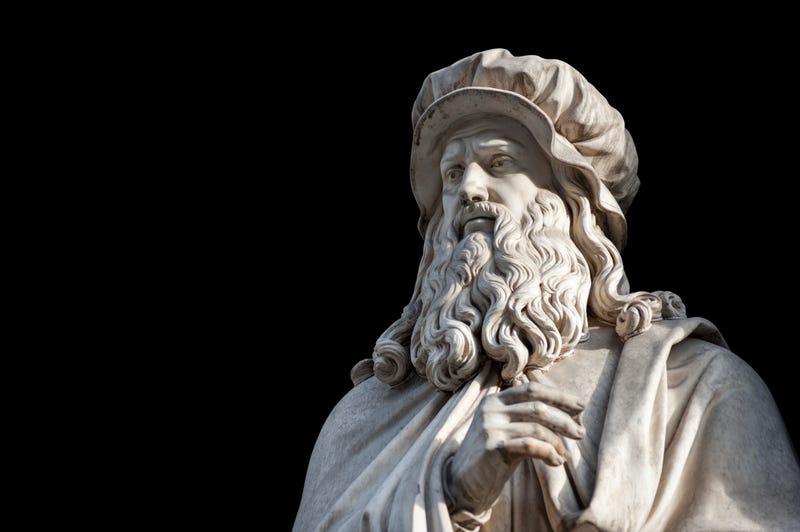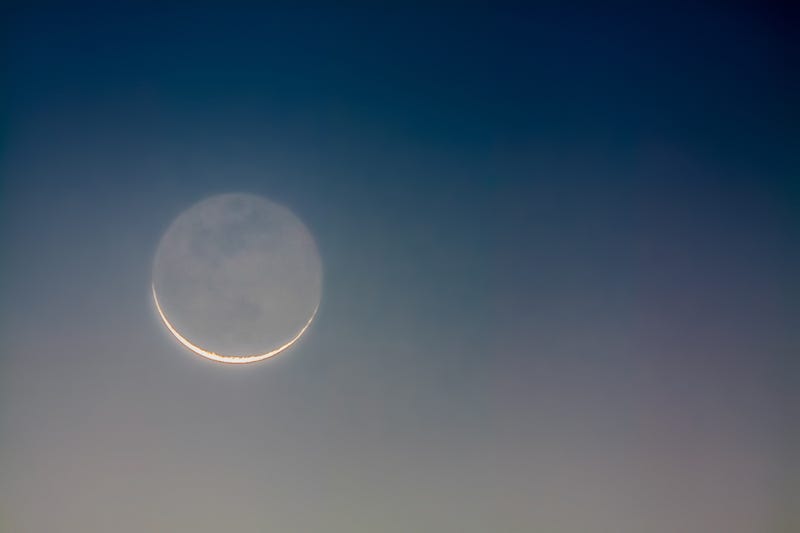
Hundreds of years ago, Renaissance artist, scientist and inventor Leonardo DaVinci cracked open a mystery that had long plagued humans – a phenomenon called “Earthshine.”
Today, it is known as the “Da Vinci glow” and this week and next are the best times of year to see it. Read to find out how you can catch a glimpse.
What is the Da Vinci glow?
What Da Vinci realized was that the moon doesn’t actually emit its own light. Instead, it reflects light.
According to NASA, the Da Vinci glow is visible whenever there’s a crescent Moon on the horizon at sunset. Even when the sun sets on the moon, it does not get completely dark since the Earth is still a source of light in the sky. In fact, NASA said that our planet lights up the “lunar night” 50 times brighter than a full moon, and that its light produces the Da Vinci glow.
“Look between the horns of the crescent for a ghostly image of the full Moon,” said the agency. “That's Earthshine.”
When DaVinci solved the riddle in the 1500s, he didn’t have the benefit of images captured from space. Copernicus sun-centered theory about the solar system wouldn’t be published for more than two decades.
“Drawing on the fastidious attention he paid to reflected secondhand light in paintings, he wrote that when we can dimly see the dark part of the moon, it is because the parts not lit by the sun can catch the reflected light from the Earth,” wrote Walter Isaacson in his biography, Leonardo Da Vinci.

Da Vinci included observations about the moon in his “Codex Leicester” circa 1510. While he understood the basic mechanics of Earthshine, he hypothesized that it occurred because the moon was covered in water. In reality, clouds are the primary source of the phenomenon.
“Earth shines because it reflects sunlight, and clouds do most of the reflecting,” said NASA. “When Apollo astronauts looked at Earth, the oceans were dark and the clouds were bright.”
As astronauts prepare to head back to the moon, they expect to learn more about Earthshine. They could even see the Da Vinci glow at their feet as they walk on the lunar surface.
Modern scientists also study Earthshine to better understand climate change.
“Scientists in recent years have studied the moon’s ashen glow to discover how much sunlight our planet reflects – a key datum for global warming studies,” according to NASA. “They’ve found that Earthshine is most intense – about 10% brighter than average – during April and May.”
How can you see the Da Vinci glow?
“Those looking up at the night sky this week might spot a faint, ghostly glow illuminating the whole of the moon,” CBS News reported Tuesday.
Live Science explained that we won’t be able to see the new moon arriving on Friday here on Earth because “the moon is roughly between Earth and the sun and is lost in the latter’s glare.” However, during the morning hours a few days before and after this new moon, Da Vanci’s glow will be present if skies are clear.
According to Live Science, the best days to see the Da Vinci glow in the western sky in the hour after sunset are:
· Sunday, May 21: 5%-illuminated waxing crescent moon
· Monday, May 22: 10%-illuminated waxing crescent moon
· Tuesday, May 23: 17%-illuminated waxing crescent moon close to Venus
“Da Vinci glow is best seen with either the unaided eye or using any pair of stargazing binoculars or a good small telescope,” said the outlet.
LISTEN on the Audacy App
Sign up and follow Audacy
Facebook | Twitter | Instagram
